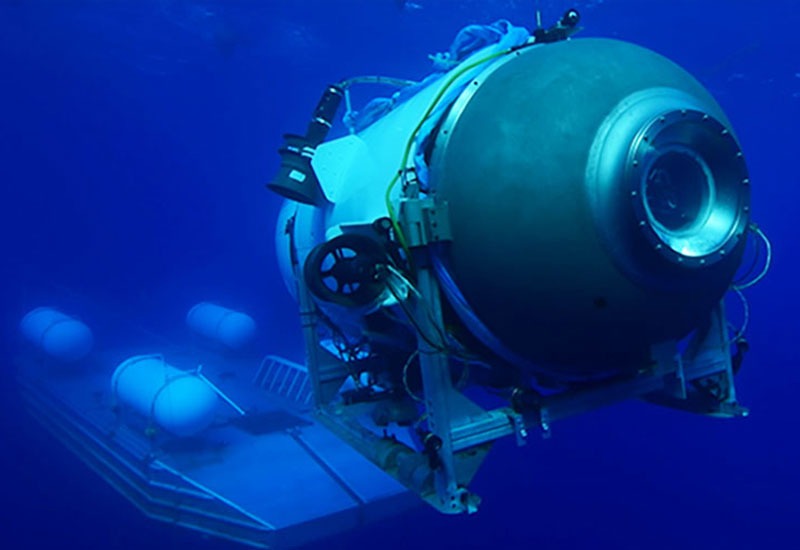We now have the confirmed estimated time when the missing Titanic tourist submarine will run out of air.
There were five passengers on the small submarine called Titan, which was on a trip to explore the wreckage of the famous ship Titanic that sank in 1912.
After approximately one hour and 45 minutes into the journey, the US Coast Guard declared that they had lost all communication with the submarine and were unaware of its current location.
The submarine is believed to be lost somewhere in the Atlantic Ocean.
An international search is currently underway to locate the vessel, but time is of the essence as the Titan's oxygen supply is running out rapidly.
As reported by Sky News, the submarine's air supply is predicted to be depleted at 12:08pm UK time (7:08am EST) on Thursday, June 22.
When the Titan started its dive on Sunday, it was believed to have 96 hours' worth of oxygen on board.
Nevertheless, the five passengers on board, including British billionaire Hamish Harding, are now facing additional risks beyond the depleting air supply.
In an interview with the BBC, Dr. Ken LeDez, a hyperbaric medicine expert at Memorial University in St. John's, Newfoundland, explains that various factors, such as an individual's metabolism, play a significant role in determining their survival time.
He explains: "It's not like switching off a light, it's like climbing a mountain – as the temperature gets colder and metabolism falls [it depends] how fast you ascend that mountain.
"They're going to do everything they can to reduce their oxygen consumption, they're going to rest, they're going to try to be as relaxed and calm as possible."
He also added that 'hypothermia could be their friend.'
"There is a possibility if they cool down enough and lose consciousness, they could live through it – rescuers know this," he tells the outlet.
The increase in carbon dioxide levels is another factor that could potentially affect the passengers. When carbon dioxide accumulates, it can act like an anesthetic gas and induce sleep among those on board.
Additionally, there are concerns that the submarine may have imploded at a depth of 10,000 feet underwater. The immense pressure exerted by the water at such depths could potentially cause catastrophic damage to the missing submersible.

With the loss of communication, authorities from various countries have joined forces to assist in the search for the Titan submarine.
In a final effort to rescue the tour ship, the Odysseus 6K vessel, capable of reaching depths of 6,000 meters or 19,000 feet, has been brought to Canada.
Additional assistance has been provided by the French research vessel L'Atalante, equipped with the Victor 6000 robot. The robot can assist in tasks like cutting cables or performing maneuvers to free a stranded vessel, although it lacks the ability to lift the submarine on its own.
A newly arrived ship is reported to be equipped with the Flyaway Deep Ocean Salvage System (FADOSS).
The FADOSS system includes a winch and a long cable, specifically designed to be capable of hoisting objects such as a submarine from the depths to the surface.
Sonar equipment detected a recurring banging noise occurring every 30 minutes.
Unfortunately, the USCG North East tweeted that their search for the source of the sound yielded negative results.



